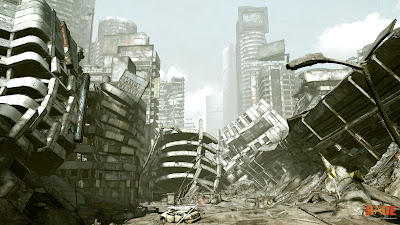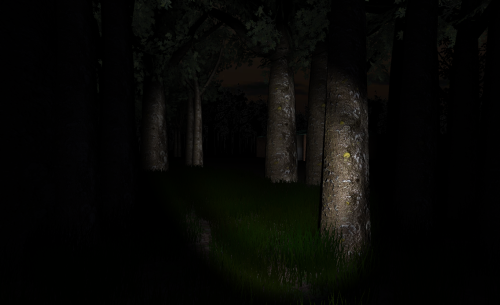Hi! I don't use this blog any more, but I am still making games all the time and writing about them some of the time.
All my recent stuff gets posted on Twitter and Tumblr (or head here if you want to filter my Tumblr into blog posts only).
I also have a portfolio which has links to all my major projects and social stuff.
Thanks! :)
figments & pigments
Thursday, 24 March 2016
Friday, 17 May 2013
Luminesca's still swimming
Luminesca's going strong at the moment. Check out this new video, then come and pre-order! You can play Chapter 1 straight away, and I'm adding more in the near future.
Thursday, 28 February 2013
Confused Rogue prototype
Confused Rogue (working title) is a game prototype I made over the past two days. I was inspired by Roguelike games, stripped the idea down to 1D movement, übersimplified the mechanics, and added just a dash of Glitch Tank's randomised deck of moves.
The aim of the game is to get to the exit on the far right, pushing through neverending waves of barbarians as you go. But your set of available moves is shuffled (that's the confusion part!) and each time you choose one a random new one takes its place. Losing all your hearts or getting trapped at the left side of the screen results in game over.
[Play it now] or [save it for later]
I'm quite pleased with the overall concept (even if it does steal shamelessly from Glitch Tank) but there are some quite clear flaws in its design.
- Randomised deck of moves has no smart filter, so you can end up with 3 of the same. While this has its advantages (discouraging being picky) it is a non-choice for the player.
- The randomised enemy spawning can throw a line of adjacent barbarians, which is impossible to defeat without taking damage.
- As Michael Brough pointed out on Twitter, it lacks potential for mid-to-long-term strategy. The ability to charge up moves may rectify this.
I'm going to shelve development of this prototype for now and crack on with my main project, Luminesca. That's not to say I won't return to it in the future. I'd like to add more complexities and aesthetic fluff. I think a competitive 'race mode' akin to Puzzle Fighter could work well.
It's been a fun experiment though and I learned a few things about rapid prototyping. Give the game a try and let me know what you think!
Monday, 17 September 2012
Pushing forward in Rage
Note: I've been toying with the idea of fully migrating this blog to Tumblr, but until I actually commit to that I'll continue to cross-post here.

One of Rage’s defining features, I found, was its focus on getting the player to push forward and become a driving force. This is embodied in its low-level combat mechanics, its mission structure and its narrative overtones.
The combat and mission structure empowers the player to press into hostile enemy territory and throw some rather large spanners into the works. There is often a strong sense that, until you showed up, those baddies were just going about their usual baddie business. This places the player in an active role which is characteristic of most id games, in contrast to the reactive role of Gordon Freeman in the first Half-Life, who’s just trying to get out alive.
Rage has drawn my attention to the slow pace commonly found in the modern CODesque cover-based shooters. In those games, player and enemy alike rely on ducking in and out of cover to take pop-shots. This creates a very detached experience in which you are waiting for brief glimpses of heads and torsos, waiting to clear an area so you can safely progress, waiting, waiting, waiting. In Rage you are very much capable of taking the fight directly to the enemy by storming their cover and tearing right through them. Conversely, the enemies who fight at close range will force you to move around a lot and engage with the intense spatial dynamics.
The story of Rage revolves around a man who brings disruption and chaos to the world, but I found this falls short in its execution. While the player’s character is touted as this powerful presence, their actions are the only thing that appears to move the plot forward in any meaningful way. This is extrapolated to the point of absurdity when every mission relies on the player going out to complete some difficult objective while the NPCs sit around and wait for their return. This is true right up to the games anti-climactic final mission, in which you must penetrate the impenetrable fortress and do something or other while your mission-givers stand on the spot and do… nothing. Half-Life 2 - the almighty benchmark against which I compare most games - at least gave the impression that everyone else was kind of busy not dying.
Lesson learned: make the player feel like they have an effect on the world, but also make them feel like the other characters are actually capable of doing something too.
Thursday, 13 September 2012
Speaking with stilted enthusiasm
Last week night I was describing two of my personal projects to a few colleagues, and I realised how inept I am at describing these things with any kind of enthusiastic conviction.
When I start to describe one of the games I'm working on my mouth is often trying to say "I'm making this cool thing!", yet my brain is thinking "...but it's not really a cool thing until you work out all these kinks". The result is I uncertainly drag out a "I'm making this... ehhh... thing. It's kind of like this and stuff, but there are all of these problems".
It's not that I don't have confidence in the concepts, it's just that there's something about being in the early/mid stages of the game design process that makes me painfully aware of how much more there is to work out, how many problems there are to solve, how many of its elements conflict with one another, how the tertiary mechanics fail to support the core mechanic, how I'm going to have to resolve that pesky ludonarrative dissonance, etc, etc. None of these things are easy to communicate over drinks after work when peoples' attention is divided.
But I guess it's OK. That design gap is is a driving force which I find myself compelled to fill. It's just sometimes a little tricky to convince others of its potential merits.
When I start to describe one of the games I'm working on my mouth is often trying to say "I'm making this cool thing!", yet my brain is thinking "...but it's not really a cool thing until you work out all these kinks". The result is I uncertainly drag out a "I'm making this... ehhh... thing. It's kind of like this and stuff, but there are all of these problems".
It's not that I don't have confidence in the concepts, it's just that there's something about being in the early/mid stages of the game design process that makes me painfully aware of how much more there is to work out, how many problems there are to solve, how many of its elements conflict with one another, how the tertiary mechanics fail to support the core mechanic, how I'm going to have to resolve that pesky ludonarrative dissonance, etc, etc. None of these things are easy to communicate over drinks after work when peoples' attention is divided.
But I guess it's OK. That design gap is is a driving force which I find myself compelled to fill. It's just sometimes a little tricky to convince others of its potential merits.
Sunday, 19 August 2012
Source Filmmaker - Terminal Tension
I finally got my hands on the Source Filmmaker beta! I made this animated short in about a day so I could get to grips with it. I'm a bit of a novice when it comes to keyframe animation, but oh well, I had fun making it and learned a few tricks!
Monday, 6 August 2012
Slender Thoughts
Slender is a small, low-fi horror game based around the Slender Man urban legend. It achieves a lot with a very simple system and very few extraneous elements, resulting in a very pure design with maximum impact (sheer terror). If you haven't played it yet you should do that, alone, at night, before reading any more about it.

One of the things that makes Slender such a terrifying experience is the element of uncertainty. The underlying system is dynamic and non-linear, so experiences can play out differently depending on how you explore and you can never truly be sure where or when the Slender Man will appear next.
The forest you inexplicably find yourself in is repetitive and dense, which would make it impossible to navigate if it weren't for the odd landmarks dotted around... An abandoned truck here, a concealed shower block there... Your eyes begin to play tricks on you in the monotony and you can easily end up going round in circles if you're not careful.
But perhaps the most frightening mystery in the game is the very nature of the Slender Man himself, particularly his unpredictable way of moving. In what is perhaps Slender's most clever trick, the eldritch antagonist remains perfectly motionless when you are looking at him and only moves when you turn away. This would be fine, if it weren't for the fact that LOOKING AT HIM FOR TOO LONG KILLS YOU. You are forced to look away and therefore allow him to come closer, and the resulting effect is that you are never fully sure how fast he moves, or even how he moves at all. Aside from being a clever method for reducing the game's animation requirements to zero, this put me at such a frightening level of panic that I quit after a single game.
It also turns the game's villain into a kind of horrific, humanoid ninja cat.

One of the things that makes Slender such a terrifying experience is the element of uncertainty. The underlying system is dynamic and non-linear, so experiences can play out differently depending on how you explore and you can never truly be sure where or when the Slender Man will appear next.
The forest you inexplicably find yourself in is repetitive and dense, which would make it impossible to navigate if it weren't for the odd landmarks dotted around... An abandoned truck here, a concealed shower block there... Your eyes begin to play tricks on you in the monotony and you can easily end up going round in circles if you're not careful.
But perhaps the most frightening mystery in the game is the very nature of the Slender Man himself, particularly his unpredictable way of moving. In what is perhaps Slender's most clever trick, the eldritch antagonist remains perfectly motionless when you are looking at him and only moves when you turn away. This would be fine, if it weren't for the fact that LOOKING AT HIM FOR TOO LONG KILLS YOU. You are forced to look away and therefore allow him to come closer, and the resulting effect is that you are never fully sure how fast he moves, or even how he moves at all. Aside from being a clever method for reducing the game's animation requirements to zero, this put me at such a frightening level of panic that I quit after a single game.
It also turns the game's villain into a kind of horrific, humanoid ninja cat.
Subscribe to:
Posts (Atom)
